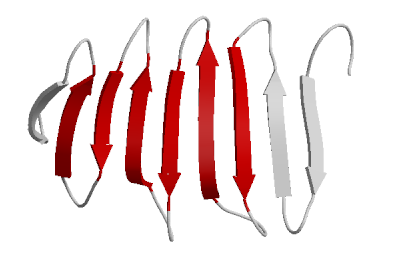So first of all, what are proteins? Proteins are molecules composed of a large number of amino acids joined together by peptide bonds. The term protein is used if the molecule contains more than 50 amino acids while the molecule is known as a peptide if it contains less than 50 amino acids.
A protein's structure can be divided into four categories: primary, secondary, tertiary and quaternary structure. Primary structure refers to the linear number and order of the amino acids present as well as the location of any disulphide bonds.
Secondary structure refers to the spatial relationship between amino acids that are close to each other in the primary amino acid sequence. The chain of amino acids in the protein will form different conformations depending on the interactions between the amino acids. Different parts of the protein may have different conformations depending on the sequence of amino acids. There are three types of secondary structure: the Alpha-Helix, Beta-pleated-sheets, and the Beta-Turn.
 |
| A Beta-Turn |
 |
| A Beta-Pleated-Sheet |
 |
| An Alpha-Helix |
Tertiary structure refers to the spatial arrangement of amino acids that are far apart in the linear sequence of amino acids. It refers to the complete 3D structure of the protein.
Some proteins consist of multiple polypeptide chains and these are known as oligomeric proteins. Quarternary structure refers to the way separate monomeric protein subunits associate to form oligomeric proteins. Proteins that have identical sub units are called homo-oligomers while proteins which contain distinct subunits are called heterooligomers. An example of a protein which displays quaternary structure is haemoglobin.
 |
| Haemoglobin |
If you have any questions about this topic please feel free to ask :)
No comments:
Post a Comment